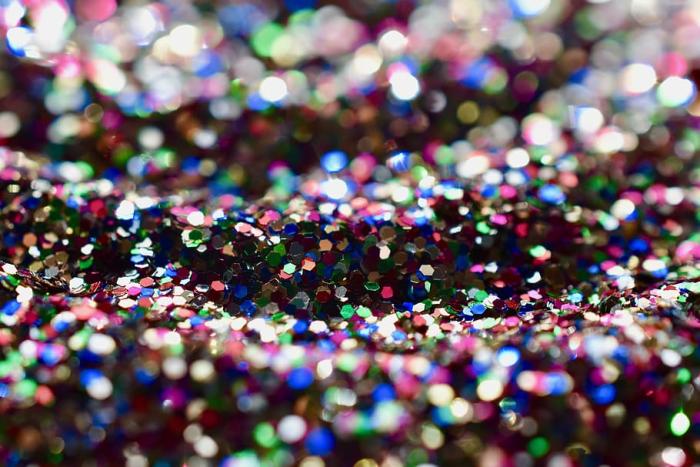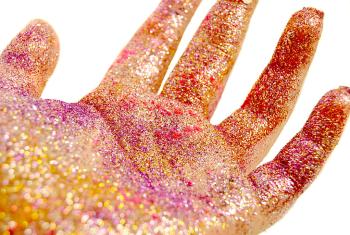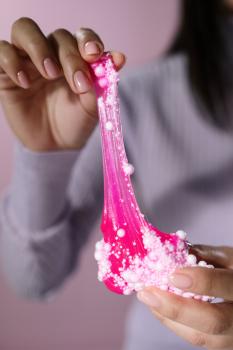
Who doesn’t love glitter? It adds a colorful, sparkly, shimmery shine to everything!
Glitter is a collection of different sized, shaped, and colored particles that are cut by a machine. These particles reflect the light at different angles, causing shimmer or sparkle. In ancient times, mica and malachite are minerals that were used to add a glittery effect by people throughout the world, including China, India and Greece. These minerals were used in the arts and cosmetics for centuries.
The first plastic glitter was created by accident on a farm in New Jersey in 1934. Henry Ruschmann used plastic sheets and cut tiny, glittery particles. Aluminum can be added to make the glitter reflective or sparkly.
The downside of glitter is that it is microplastic. The news contains many stories of the bad side of microplastics. They are almost impossible to remove from the environment. Mica is naturally occurring and can be a better choice of material to make glitter. But mica is often mined by children in India, which is illegal and dangerous. Biodegradable glitter can be made, but still has a harmful effect on aquatic life.


- Glitter has been called flitter or slivers.
- Edible glitter may contain sugar, food coloring and cornstarch. Often other ingredients are added in.
- Ancient Egyptians used mica and possibly crushed beetles to make a shimmery make-up powder.
- Glitter clings to everything because of static electricity.
Glitter Everywhere! by Chris Barton
Just Add Glitter by Angela DiTerlizzi
Glitter by Stella J. Jones
